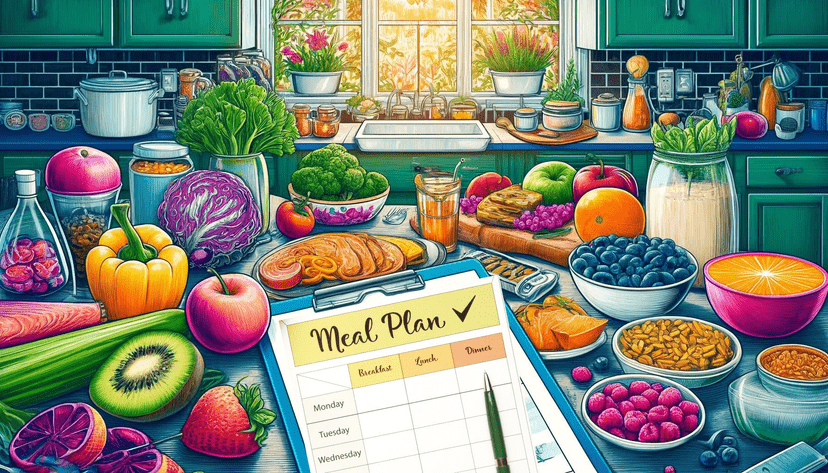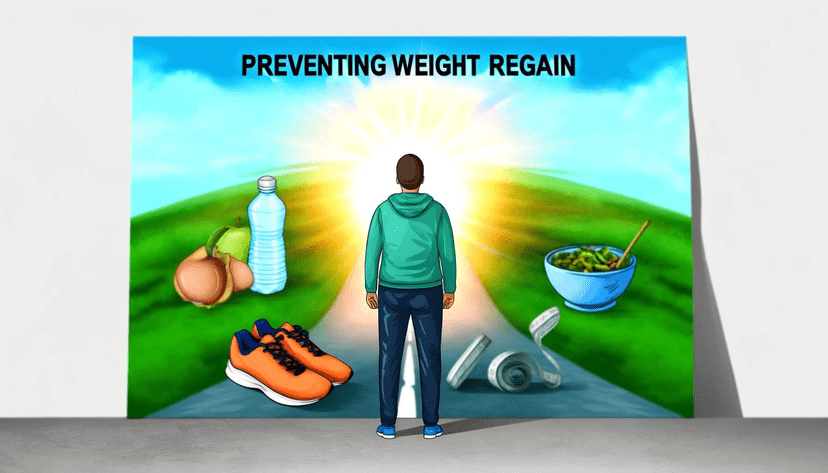Revisiting Goals: Setting New Health and Wellness Objectives

The Importance of Re-evaluating Health and Wellness Goals
A fleeting glance at where you've been and where you're heading, re-evaluation of goals, forms an essential part of any journey, especially in our pursuit of health and wellness. This periodical introspection enables us to chart our progress, understand the effectiveness of our efforts, and directs us in setting up and refining our future objectives. It serves as a sort of compass, keeping us oriented towards our ultimate goals- optimal health and wellbeing.
Benefits of Regular Goal Evaluation
Our health and wellness journey is a winding road with many bends, ups, and downs. Our capacities, realities, and needs change over time, and staying static in such a dynamic process can hinder progress. Regular evaluation serves to align our practices with our evolving intra and interpersonal realities and aspirations.
- It helps ensure consistency, encouraging us to persevere in our habits, practices, or exercises that are contributing positively to our health and wellness.
- It enables us to identify ineffective practices, helping us steer away from approaches that are not providing desired results or that might be negatively affecting our health.
- It facilitates course correction. We are all human, and we might fall off our wellness wagons. Our failures shouldn't discourage us. Instead, evaluation helps us retread our paths, learn from our deviations, and bounce back stronger.
- It enables us to update our goals periodically to continuously challenge our comfort zones, preventing stagnation and promoting continual growth.
Reflecting on Past Achievements and Learning from Challenges
Reflecting on our past achievements fills us with a sense of pride, fueling further motivation. It's validation that our hardworking, persistence, and sacrifices are yielding fruits. An artistic image of our progress, highlighting the enhancement of our stamina, physical strength, mental wellness, or improved labs, can provide a quintessential morale boost, an encouragement to stay committed to our wellness regimens.
On the contrary, understanding and accepting our challenges is equally important. Our seeming failures should be viewed as priceless learning opportunities, not roadblocks. They tell us what doesn't work for us, as every individual is unique and what works for one might not work for others. They help us in shaping more personalized and effective approaches, adding a distinct flair to our journey towards a healthier and fitter self.
Staying Motivated with Fresh Objectives
Setting fresh objectives is crucial to keeping the fire of motivation burning. Humans are driven by purpose and a sense of achievement. We must have something to look forward to! However, these goals must also respect our limitations. They should be realistic and attainable, yet challenging. Walking this delicate balance is important, so we neither set ourselves up for failure nor let our progress stagnate. Fresh objectives not only provide continual motivation but also make our wellness journey more dynamic and exciting.
In essence, re-evaluation is not just a reflective process but also a prospective one. It not only gives us a sense of our advancements and lessons learnt but also prepares us and lays a clear path forward in our health and wellness journeys.
Strategies for Setting Effective New Goals
Embarking on a journey towards a healthier lifestyle requires thoughtful planning and definitive goals, which are not just realistic but also measurable. Every significant change starts with a single step. The challenge often lies in taking that first step and then maintaining the momentum. Regularly revisiting and updating your goals not only keeps your enthusiasm alive but also aligns your efforts with your evolving lifestyle and capabilities. Key to creating effective goals is the application of the SMART criteria: Specific, Measurable, Achievable, Relevant, and Time-bound.
Applying the SMART Criteria to Health and Wellness Goals
The acronym SMART is a useful tool that ensures your health and wellness goals are clear and reachable. Each letter in this acronym stands for a crucial element in creating objectives which are as effective as possible:
-
Specific - A goal should be crystal clear. Your goal should be detail-oriented, such as "I want to run a marathon" instead of "I want to stay fit".
-
Measurable - Criteria should be put in place to track your progress. Ideally, goals are quantifiable, like "I want to lose 10lbs" rather than "I want to lose some weight".
-
Achievable - Goals should be within the realm of possibility for you, taking into consideration your current health, lifestyle, and resources.
-
Relevant - The goal should be pertinent to your life and your personal values.
-
Time-bound - Deadlines create urgency and help to prevent everyday tasks from taking priority over your longer-term goals.
Each health and wellness goal you set should meet these criteria to ensure effectiveness.
Identifying Areas for Improvement and Growth
Continuous improvement is the foundation of progression, especially when setting health and wellness objectives. Identify the lifestyle practices that require change. This could be related to physical fitness, diet, sleep habits, mental health, or any aspect of your wellbeing. Discover potential areas for growth by:
-
Reviewing your past health and wellness goals: What worked? Where did you face challenges? Learn from your past experiences to enhance your future objectives.
-
Assessing your current wellness: Use tools like Health Risk Assessments, wellness screenings, or self-reflection to observe your health status.
-
Seeking professional help: Consulting with healthcare professionals, dietitians, or fitness trainers can provide authoritative and personalized input for improvement.
Once these areas are identified, you can begin to develop goals tailored to effecting positive change.
Creating Short-Term Milestones for Long-Term Success
An excellent strategy for accomplishing long-term goals is to break them down into manageable short-term milestones. These create a sense of accomplishment, prevent the feeling of being overwhelmed, and reinforce your commitment to continue going forward. Celebrate these milestones as signs of progress, acting as a psychological boost which can be hugely beneficial to maintaining momentum.
Remember, adopting a healthier lifestyle is a marathon, not a sprint. Patience, persistence, and the application of these strategies will yield beneficial results. Live by the motto: slow and steady wins the race. By setting effective goals, acknowledging areas for improvement and growth, and celebrating each achievement, however small, you forge a path towards a healthier future. These are your stepping stones to reaching the larger objective of optimal health and wellness. Every journey begins with a single step. Start yours today.
Incorporating New Goals into Daily Life
Making changes to your lifestyle can seem daunting, but with carefully planned steps, incorporating new health and wellness goals into your daily routine can be an achievable task. The process of adapting new goals involves building a supportive environment, utilizing various tools and trackers, and making necessary lifestyle adjustments for sustainable changes.
Building a Supportive Environment for New Goals
The first essential step in reaching your health and wellness goals is creating a supportive environment that fosters growth and motivation. In the context of eating habits, for instance, this could involve stocking up healthy foods, doing meal preparation in advance, or avoiding "trigger" foods which may lead you away from your goals. Surrounding yourself with supportive individuals, such as loved ones or a workout buddy, can also add a layer of external motivation and emotional support.
If your goal represents a significant lifestyle change, like quitting smoking, seeking professional help might be crucial. Consult a healthcare provider, join a support group, or find a therapy style beneficial for your situation. The key is to make your environment as conducive as possible for the changes you desire.
Utilizing Tools and Resources for Goal Tracking
Consistent tracking of your progress aids in maintaining motivation and keeping sight of your goals. Many evidence-based studies emphasize the significance of self-monitoring in achieving health and wellness goals.
Use a wellness app, a food intake diary, a step counter, or a heart rate monitor depending on your objective. Regular screenings and health check-ups can also be effective for tracking progress, especially for health-related goals.
Remember, the best tools are the ones that fit seamlessly into your lifestyle, so choose a tracking method that is easy for you to sustain.
Making Lifestyle Adjustments to Support New Objectives
Implementing lifestyle changes to support new objectives is about making small changes and being consistent. As per the principles of behavior change theory, introducing changes gradually, maintaining consistency, and focusing on small wins can lead to substantial, long-term outcomes.
If seeking physical health improvement, instead of drastically altering your workout routine, gradually increase the intensity, frequency, or duration of your current routine. Or if aiming for mental health improvement, practicing mindfulness or meditation for few minutes each day can be a good start.
It's essential to pay attention to your body's response to these changes and adjust accordingly, always keeping sustainability in perspective.
Adjusting routines might feel challenging initially but remember, perseverance is key. Trials, errors, reassessments, and readjustments are all part of the process. Stick with your objectives, keep monitoring progress, and continuously strive to build a supportive environment, and soon your new goals will become part of your everyday life.
In Summary
This blog post aims to shed light on the importance of re-evaluation of health and wellness goals. Goal revaluation serves as a compass that keeps us on a path towards our ultimate goals- optimal health and wellbeing. The key incentives of regular goal evaluations include ensuring consistency in our habits, identifying ineffective practices, promoting course correction, and ensuring goals are updated to reflect evolving realities.
The essence of re-evaluating goals is to reflection on our achievements and to learn from our challenges. This aids in shaping more personalized and effective approaches. Fresh goals serve to keep us motivated and make our wellness journey dynamic.
We also explored strategies for setting new goals, applying the SMART criteria: Specific, Measurable, Achievable, Relevant, and Time-bound, is key to creating effective goals. Identifying areas for improvement, creating short-term milestones for long-term success, and incorporating new goals into daily life are also essential aspects of goal setting and achievement.
Plan of Action
To implement these concepts, you will need to periodically sit down and go through the process of re-evaluating your health and wellness goals. This process will allow you to keep track of your progress, phase out ineffective practices, execute necessary course corrections, and keep your goals updated.
Action Steps
Follow these steps to implement the concepts from the blog post:
-
Set a time for re-evaluation: Firstly, establish a dedicated time for regular re-evaluation of your goals. It could be once a month, every three months, or whatever suits your schedule and objectives best.
-
Track your progress: Regularly track your progress using a diary, a wellness app, or any other suitable tool. This record will serve as a useful tool during your re-evaluation process.
-
Apply the SMART criteria: When formulating new goals, ensure they are Specific, Measurable, Achievable, Relevant, and Time-bound.
-
Identify areas of improvement: Review your past goals and experiences to identify areas for improvement and growth.
-
Divide long-term goals into milestones: Make your long term goals more manageable by dividing them into short term milestones.
-
Incorporate new goals: Gradually integrate these goals into your daily life. Make necessary lifestyle adjustments and create a supportive environment.
-
Monitor regularly: Monitor your progress regularly, adjust your goals as necessary and celebrate your achievements.
By following these action steps, you'll be well on your way to achieving your health and wellness aspirations. Remember, health and wellness is a personal journey that takes commitment, patience, and a whole bunch of self-love and self-care. Treat yourself kindly and celebrate every little triumph you achieve along the way.










